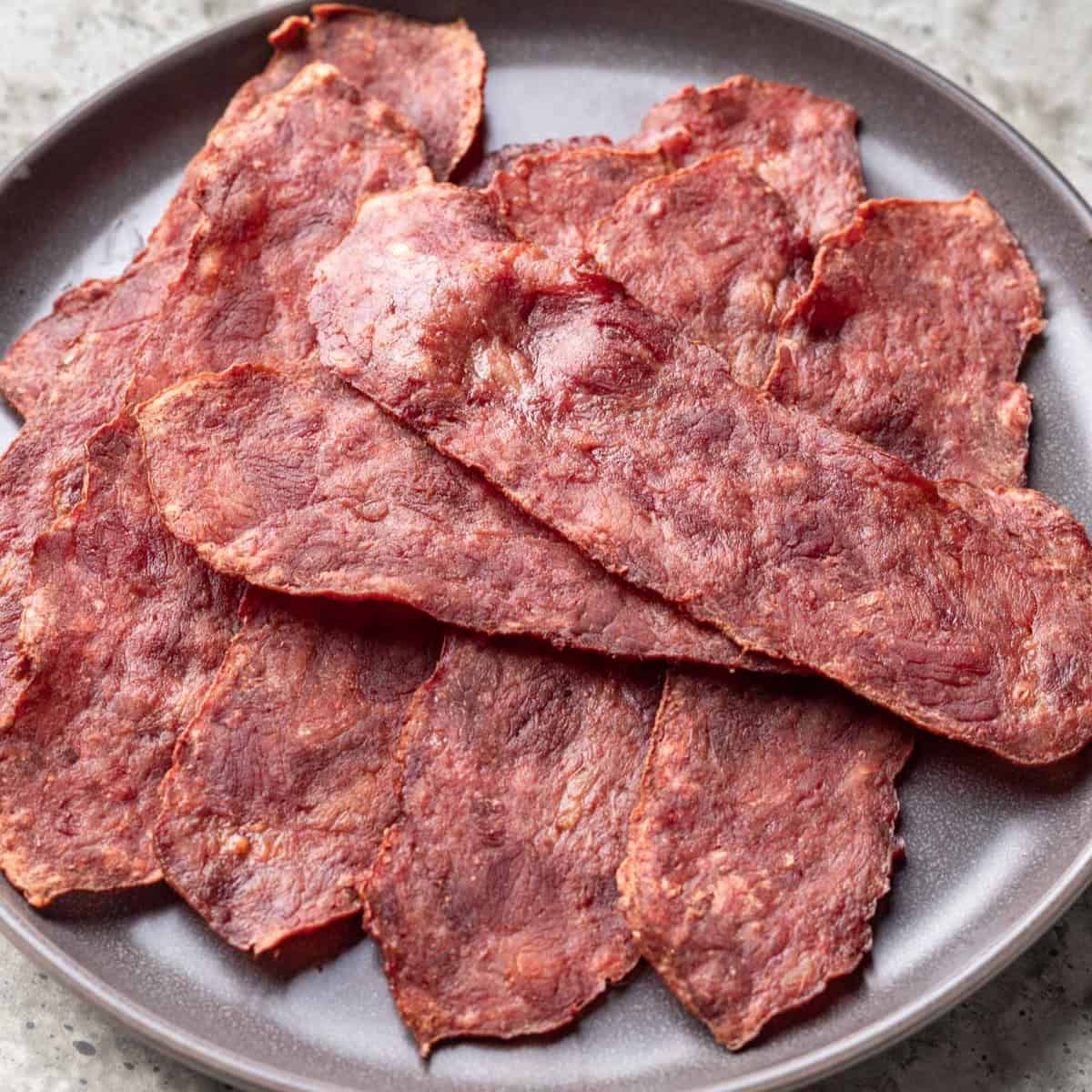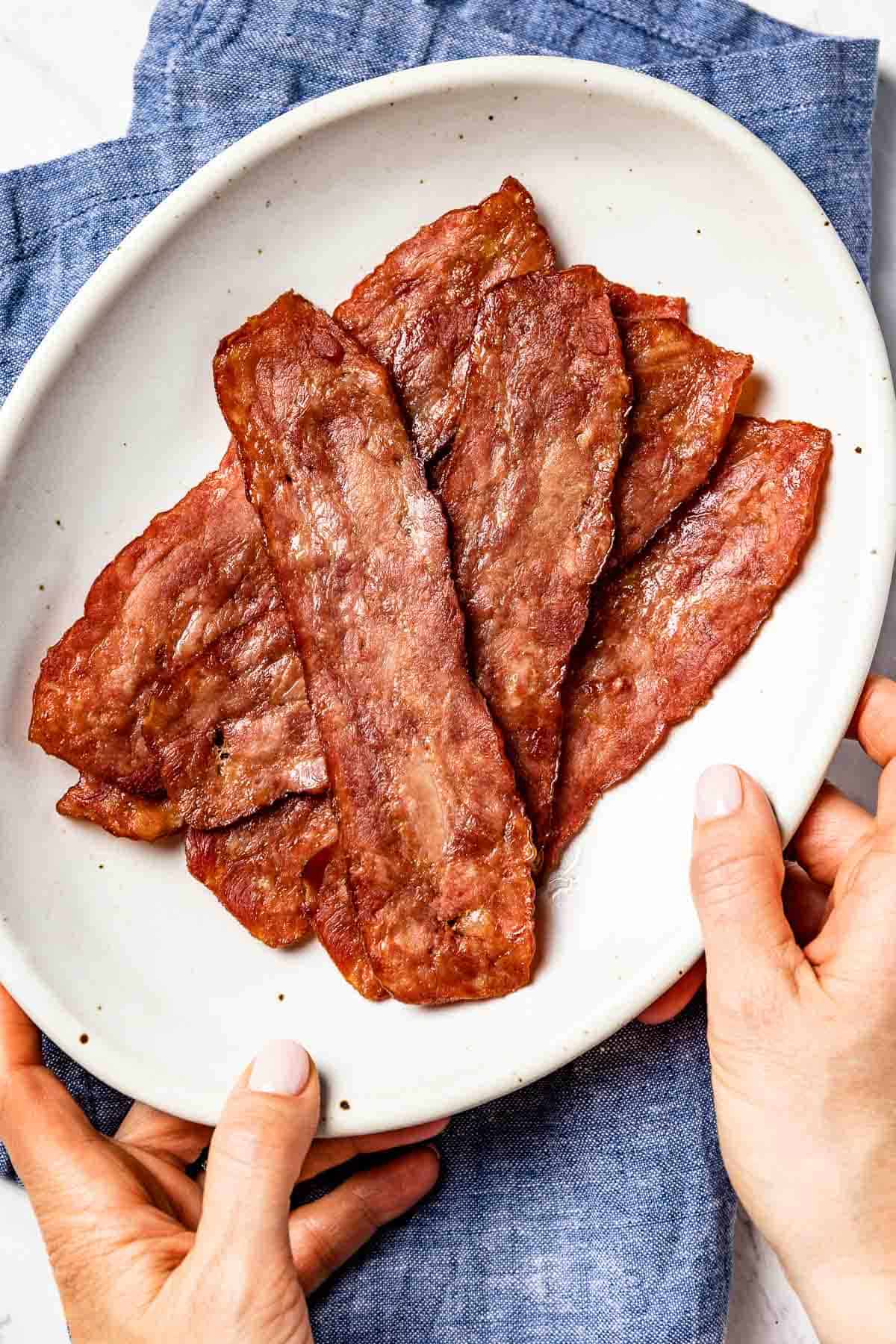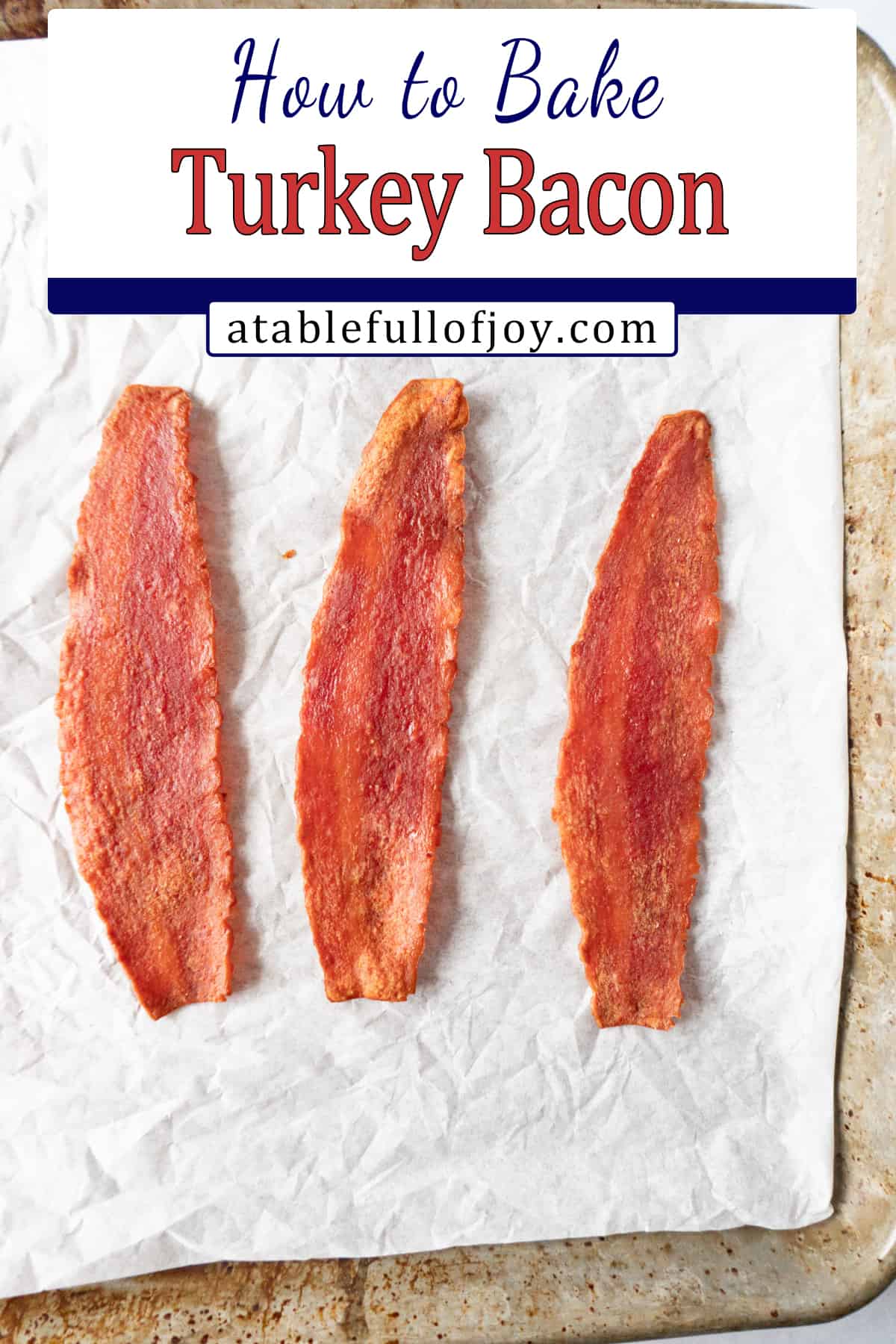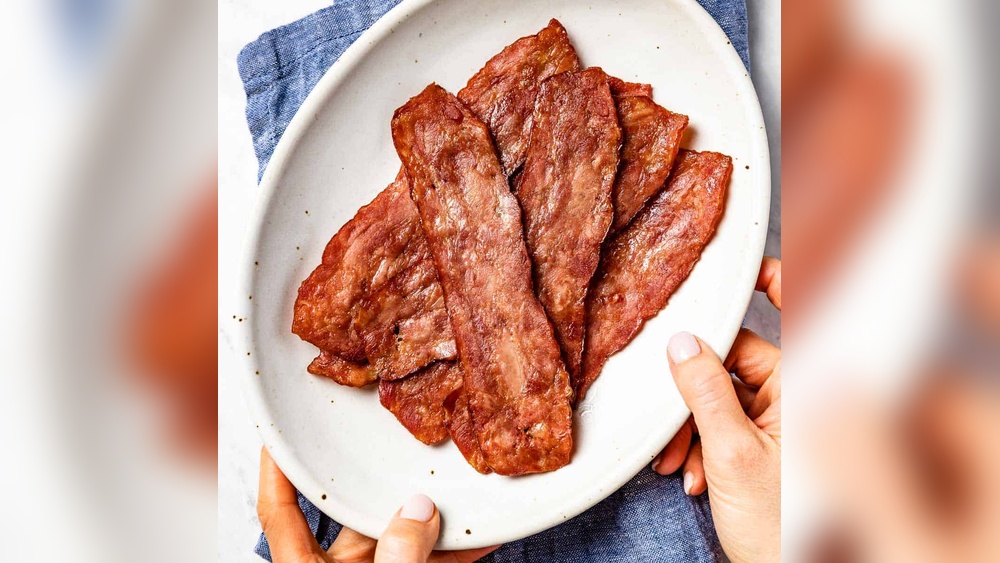If you’ve ever wondered how to cook turkey bacon so it’s crispy, flavorful, and just right, you’re in the right place. Turkey bacon can be a healthy alternative to traditional pork bacon, but it cooks differently and needs a little extra care.
Whether you’re making breakfast, adding a tasty crunch to a sandwich, or just want a quick snack, mastering the perfect turkey bacon can change the way you enjoy this protein. Stick with me, and I’ll show you simple, effective tips and easy methods to get that ideal crispiness every time.
Ready to transform your turkey bacon game? Let’s dive in!
Choosing Turkey Bacon
Turkey bacon comes in various types and brands. Some are made with whole turkey meat, while others include fillers. Popular brands offer different flavors and thicknesses. Always check the ingredient list to know what you are buying. Look for turkey bacon with fewer additives and preservatives for a cleaner choice.
Reading labels is important. Check for sodium content since turkey bacon can be salty. Look for low fat options if you want a healthier meal. Some brands add sugar or artificial flavors, so read carefully.
Health considerations include watching your intake of processed meats. Turkey bacon is usually lower in fat than pork bacon but can still be high in sodium. Choose nitrate-free or organic options if possible. Balance turkey bacon with fresh vegetables and whole grains for a healthy diet.

Preparing Turkey Bacon
Use a paper towel to pat the turkey bacon dry. This step helps remove extra moisture. Dry strips cook better and become crispier.
Lightly brush or spray oil on the bacon. Oil helps the bacon crisp up and keeps it from sticking.
Place the bacon strips in a single layer on a pan or skillet. Avoid overlapping so heat reaches all parts evenly.
Arrange strips carefully to allow air and heat circulation. This makes the bacon cook evenly and become crunchy.
Cooking Methods
Skillet cooking is quick and easy. Heat a nonstick skillet on medium heat. Add a little oil for crispiness. Lay turkey bacon strips in a single layer. Cook for 3-5 minutes per side. Turn often to avoid burning. The bacon is ready when it looks crispy and brown. Drain on paper towels before serving.
Oven baking is great for cooking many slices at once. Preheat the oven to 400°F (200°C). Arrange bacon on a baking sheet lined with foil or parchment paper. Bake for 10-15 minutes. Flip halfway through for even crisping. The bacon should be browned and crispy. This method uses less oil and makes cleanup easier.
Microwave option is fastest but less crispy. Place turkey bacon between paper towels on a microwave-safe plate. Microwave on high for 2-4 minutes, checking often. Time varies by microwave power. Let cool briefly; bacon will firm up. This method is quick but may be softer than skillet or oven cooked.

Skillet Cooking Tips
Preheating the pan is important. Heat the skillet on medium before adding bacon. A hot pan helps cook the bacon evenly and prevents sticking.
Manage heat by adjusting it as you cook. Too hot means burnt bacon; too low means soggy bacon. Keep heat steady for best results.
Prevent sticking by adding a tiny bit of oil, like vegetable oil. This creates a thin layer that stops bacon from sticking to the pan.
Cook in batches if your pan is small. Lay bacon strips in a single layer without overlapping. Crowding makes bacon cook unevenly and soggy.
Oven Baking Tips
Place turkey bacon strips evenly on a sheet pan. Use parchment paper or a wire rack to prevent sticking. Set the oven temperature to 400°F (204°C) for best results. Bake for about 10 to 15 minutes. Check bacon after 10 minutes to avoid burning.
For crispiness, flip bacon halfway through baking. Cooking time may vary by oven and bacon thickness. Keep an eye on bacon to reach your desired crispiness.
To avoid a grease mess, line the pan with foil or use a rimmed sheet pan. Grease will collect on the foil and is easy to discard. Clean-up becomes quick and simple this way.
Achieving Perfect Crispiness
Remove turkey bacon from heat as soon as it looks golden brown and crispy. It cooks fast and can burn easily. Cooking too long makes it dry and tough.
Place cooked bacon on paper towels to soak up extra grease. This step helps keep the bacon crisp and less oily. Let it rest for a minute before serving.
- Avoid overcooking by watching color closely.
- Turn strips often for even cooking.
- Use medium heat to prevent burning.
- Remove strips just before they become too dark.
Serving Suggestions
Turkey bacon pairs well with many foods. For breakfast, try it with scrambled eggs, toast, or pancakes. Its smoky flavor adds a nice touch.
On salads, turkey bacon bits add a crispy texture. Combine with greens, cherry tomatoes, and a light dressing for a tasty meal.
For sandwiches, use turkey bacon with lettuce, tomato, and mayo. It works well in club sandwiches or wraps. The lean meat keeps it healthy and flavorful.
These simple ideas make turkey bacon a versatile and delicious choice.
Storing And Reheating
Store turkey bacon in an airtight container or wrap it tightly in plastic wrap. Keep it in the refrigerator and use within 5 days for best quality. For longer storage, freeze turkey bacon in a sealed bag for up to 2 months. Label with the date to track freshness.
Reheat turkey bacon in a skillet over medium heat. Use low heat to keep it crispy without burning. Avoid microwaving because it can make the bacon soggy. Instead, place the bacon on a baking sheet and heat in the oven at 350°F (175°C) for 5-7 minutes. This method helps keep the bacon crunchy.
Common Mistakes To Avoid
Overcrowding the pan causes uneven cooking. Turkey bacon strips need space to crisp well. Crowding makes bacon steam instead of fry. Cook in batches to keep crispiness.
Skipping added fat can lead to sticking and burning. Even though turkey bacon has some fat, a little oil or butter helps cook it evenly. Use a small amount of oil to keep bacon tender and golden.
Ignoring cooking times can cause undercooked or burnt bacon. Turkey bacon cooks fast, usually 3–5 minutes per side. Watch closely and flip often for even color and texture. Remove from heat when crispy but not burnt.

Frequently Asked Questions
How Is Turkey Bacon Supposed To Be Cooked?
Cook turkey bacon in a skillet over medium heat with a little oil. Fry until crispy, about 4-6 minutes per side. Alternatively, bake in the oven at 400°F (200°C) for 15-20 minutes on a lined sheet pan. Drain excess grease on paper towels before serving.
How To Cook Turkey Bacon In A Pan?
Preheat a skillet over medium heat and add a small amount of oil. Place turkey bacon strips in a single layer. Cook for 4-6 minutes, flipping occasionally until crispy and browned. Remove and drain on paper towels before serving.
Is It Better To Bake Or Pan Fry Turkey Bacon?
Baking turkey bacon cooks evenly and reduces mess, while pan frying crisps it faster with added oil. Choose based on preference.
Is It Better To Cook Bacon In The Oven Or On The Stove?
Cooking bacon in the oven offers even heat and less mess, making it ideal for large batches. Stove cooking gives quicker results and more control over crispiness. Choose oven for convenience and stove for speed and texture. Both methods yield delicious bacon if monitored carefully.
Conclusion
Cooking turkey bacon is simple and quick with the right steps. Use medium heat to avoid burning and cook evenly. Adding a little oil helps it crisp up nicely. Keep an eye on the bacon so it doesn’t overcook. Drain on paper towels to remove extra grease.
Enjoy turkey bacon as a tasty, healthier alternative to pork bacon. Try different cooking methods to find what you like best. With practice, you’ll prepare turkey bacon that is crispy and delicious every time.

